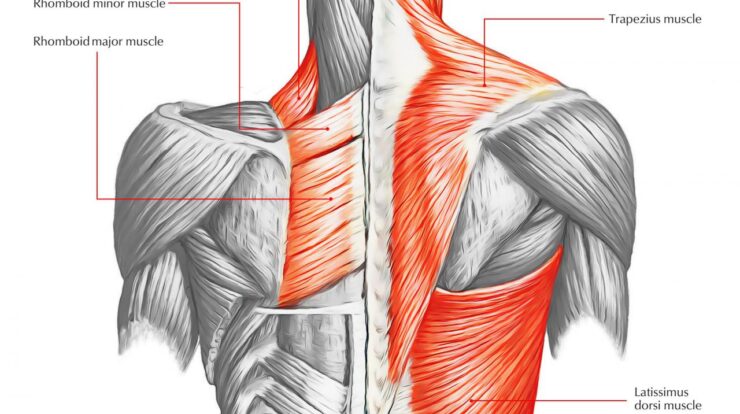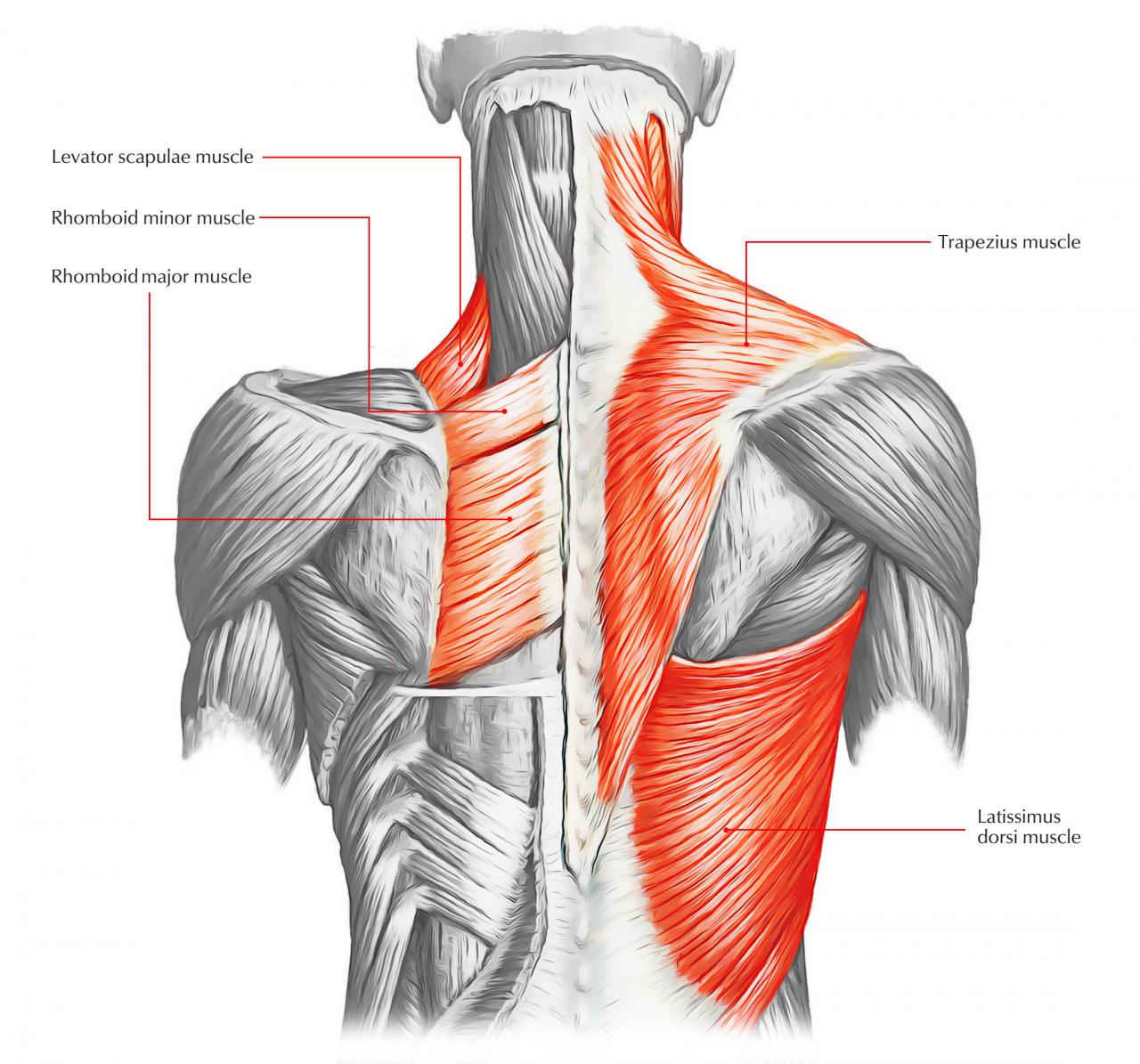
Back muscles, the powerhouse behind our posture and movement, play a crucial role in our physical well-being. From stabilizing the spine to enabling powerful athletic performances, understanding the anatomy, function, and training techniques of back muscles is essential for optimal health and fitness.
In this comprehensive guide, we delve into the world of back muscles, exploring their structure, function, and the benefits of strengthening them. We’ll also discuss common injuries and provide rehabilitation tips to help you maintain a healthy and strong back.
Overview of Back Muscles

Back muscles, collectively known as the back musculature, play a crucial role in maintaining posture, facilitating movement, and providing structural support to the spine. The major back muscles are located in three layers: superficial, intermediate, and deep.
As we celebrate Mother’s Day, let us extend our heartfelt wishes to all moms. Whether you are a first-time mother or a seasoned pro, we appreciate your unwavering love and support. May this special day be filled with happy mothers day wishes , heartfelt gratitude, and unforgettable moments.
The superficial layer includes the trapezius, latissimus dorsi, and rhomboids, which are responsible for shoulder and arm movements. The intermediate layer consists of the erector spinae, which supports and extends the spine, and the serratus posterior superior, which assists in rib cage expansion during breathing.
The deep layer contains the multifidus, rotatores, and interspinales, which provide stability and fine motor control to the spine. Together, these muscle groups work in synergy to support the spine, facilitate a wide range of movements, and maintain an upright posture.
Anatomy of Back Muscles
The back muscles are composed of various muscle fibers, including type I (slow-twitch) and type II (fast-twitch) fibers. Type I fibers are responsible for endurance and postural maintenance, while type II fibers generate power and speed for dynamic movements.
Mother’s Day is a special occasion to celebrate the incredible women in our lives. If you are wondering whether to extend happy mother’s day wishes to a pregnant woman, the answer is a resounding yes! Pregnancy is a journey of joy and anticipation, and a mother-to-be deserves to be celebrated just as much as any other mother.
The back musculature is divided into two main regions: the thoracic region, which extends from the neck to the lower ribs, and the lumbar region, which encompasses the lower back and pelvis.
Lower back pain can be a debilitating condition, but there are effective exercises you can do at home to alleviate it. Visit this article for a comprehensive guide to lower back exercises that will help strengthen your core, improve your posture, and reduce pain.
The thoracic region includes the trapezius, latissimus dorsi, and rhomboids, which attach to the shoulder blades and ribs. The lumbar region consists of the erector spinae, which originates from the pelvis and inserts into the thoracic vertebrae, and the quadratus lumborum, which supports the spine and assists in lateral flexion.
Maintaining flexibility is crucial for overall health, and regular exercise is the best way to prevent flexibility issues. By incorporating stretching and flexibility exercises into your routine, you can improve your range of motion, reduce muscle stiffness, and enhance your overall well-being.
Visit this article to learn more about the benefits of regular exercise for flexibility.
Types of Back Muscle Exercises

Strengthening back muscles is essential for overall health and fitness. Various exercises target different back muscle groups, including:
- Pull-ups:Engage the latissimus dorsi, rhomboids, and trapezius.
- Rows:Target the latissimus dorsi, rhomboids, and biceps.
- Deadlifts:Strengthen the erector spinae, glutes, and hamstrings.
- Back extensions:Isolate the erector spinae and improve spinal stability.
- Planks:Engage the transverse abdominis, multifidus, and erector spinae, improving core strength and posture.
Benefits of Strengthening Back Muscles
Strong back muscles provide numerous benefits, including:
- Improved posture:Back muscles support the spine, preventing slouching and maintaining an upright posture.
- Reduced pain:Strong back muscles stabilize the spine and reduce strain on joints, alleviating back pain.
- Enhanced athletic performance:Back muscles play a vital role in power generation for sports such as weightlifting, running, and swimming.
- Improved balance and coordination:Back muscles contribute to overall balance and coordination, facilitating smooth and controlled movements.
- Injury prevention:Strong back muscles reduce the risk of back injuries by providing support and stability to the spine.
Common Back Muscle Injuries
Back muscle injuries can result from overuse, poor posture, or trauma. Common injuries include:
- Strains:Overstretching or tearing of a muscle fiber.
- Sprains:Tearing or overstretching of a ligament.
- Herniated discs:When the soft, jelly-like center of an intervertebral disc pushes through its outer layer.
- Sciatica:Compression of the sciatic nerve, causing pain, numbness, or weakness in the lower back and legs.
- Muscle spasms:Involuntary contractions of back muscles, often caused by strain or injury.
Rehabilitation and Recovery for Back Muscle Injuries
Rehabilitating back muscle injuries involves a step-by-step approach:
- Rest and pain management:Initially, rest and over-the-counter pain relievers can help reduce inflammation and pain.
- Stretching and strengthening exercises:Gradually introduce gentle stretching and strengthening exercises to improve flexibility and muscle function.
- Physical therapy:A physical therapist can provide personalized exercises and manual therapy techniques to accelerate recovery.
- Posture correction:Addressing poor posture can help prevent re-injury and maintain spinal health.
- Body mechanics:Proper body mechanics during everyday activities can reduce strain on back muscles.
Advanced Back Muscle Training Techniques
Advanced training techniques can enhance back muscle growth and strength:
- Compound exercises:Exercises that engage multiple muscle groups, such as deadlifts and rows, maximize muscle activation.
- Progressive overload:Gradually increasing weight or resistance over time to challenge muscles and promote growth.
- Drop sets:Reducing weight or resistance during a set to induce muscle fatigue and maximize hypertrophy.
- Supersets:Performing two exercises back-to-back with minimal rest to enhance muscle stimulation.
- Isolation exercises:Exercises that target specific muscle groups, such as lat pulldowns and back extensions, allow for focused development.
Conclusive Thoughts
Back muscles are a complex and vital part of our musculoskeletal system. By understanding their anatomy, function, and training techniques, we can optimize their performance and improve our overall physical health. Remember, a strong back is not only essential for daily activities but also for achieving athletic excellence and preventing injuries.
To all the incredible mothers out there, we wish you a very happy mother’s day to you too . Your love and dedication know no bounds, and we are forever grateful for your sacrifices. May this special day be filled with joy, laughter, and relaxation.
FAQ Overview
What are the main functions of back muscles?
Back muscles are responsible for supporting the spine, maintaining posture, enabling movement, and protecting internal organs.
What are the most common types of back muscle exercises?
Common back muscle exercises include pull-ups, rows, deadlifts, and back extensions.
How can I prevent back muscle injuries?
Proper posture, regular exercise, and maintaining a healthy weight can help prevent back muscle injuries.






